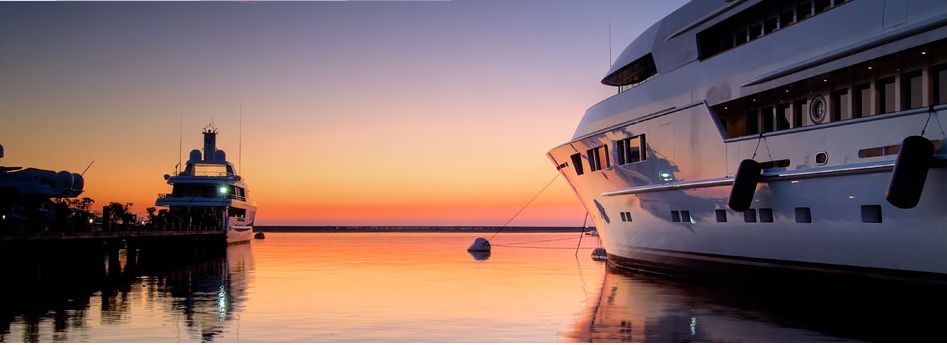14th May, 2015
Source: www.watkins-marine.com
The Atlantic basin, Caribbean and Gulf of Mexico storm season is given a nominal start date of June 1st by various agencies, analysts and vile weather enthusiasts, continuing through to a frankly overambitious end on November 30th. We routinely draw on a number of resources ranging from excitable amateur bluffers and doomsday catastrophists to the more conservative official bodies, including military and civil government agencies on both sides of the Atlantic. Our aim is to provide a simple, plainly worded and – one hopes – reasonably accurate forecast.
Regular readers will be aware that I avoid long range forecasts as far as possible, having a seafarer’s healthy mistrust of armchair meteorologists, tea-leaf readers and liars who are never around when you are up to your knees in filth, muck and green water. Nevertheless, I’ll take a stab. I have taken account of some decent forecasters who seem (foolishly, in my view) confident in six month’s predicted wisdom and whose understanding and accuracy I have come to respect, whilst simultaneously ignoring the charlatans, incompetents and fantasists who pop up from time to time.
In December, a group of well-informed experts collaborating under the auspices of University College London took a spirited lunge at an overview of the coming season. This forecast was largely based on an enhancement of low-level trade winds across the tropical Atlantic during the July to September period, stressing uncertainty in this forecast due to the unpredictability in the El Niño southern oscillation and North Atlantic sea surface temperatures. The group opted for 13 tropical storms, 6 hurricanes and 2 major hurricanes.
Last month, the London team reconvened and downgraded their forecast to a more modest 11 named storms, 5 hurricanes and 2 major hurricanes, citing cooler than average ocean temperatures across the tropical North Atlantic and Caribbean.
Shortly afterwards, on April 9th, the widely-respected Messrs. Klotzbach, and Gray, and their associates at Colorado State University piped up with 7 named storms, 3 hurricanes and just 1 major hurricane. They also considered the combination of cooler than average waters in the tropical and subtropical Atlantic, as well as a developing El Niño predicted to reach at least moderate intensity, and are predicting what has been described by Dr Klotzbach rather unscientifically as ‘a boring season’. They consider the chances of a major hurricane striking the continental United States as lower than average, although did stress rather obviously that it only takes one landfall hurricane to make it a significant season for any windswept and sodden residents affected who may by then want Dr Klotzbach’s blood.
Four days later, North Carolina State University released their forecast, predicting a near record-low season with just four to six named storms, one to three hurricanes, and one major hurricane. I like these guys.
In the last few days, the final pre-season credible analyst Tropical Storm Risk has released their annual forecast – mirroring that of the Colorado team with 11 named storms, 5 hurricanes and 2 major hurricanes. They have suggested that two named storms and, rather bravely, one hurricane will make a landfall in the United States this season.
Pushed for an opinion of my own I would also suggest that a moderate El Nino and cooler than average sea temperatures will impact on storm production this coming season. I would not however be quite as forthright as to suggest a zero landfall season.
Names this year then – ANA, BILL, CLAUDETTE, DANNY, ERIKA, FRED, GRACE, HENRI, IDA, JOAQUIN, KATE, LARRY, MINDY, NICHOLAS, ODETTE, PETER, ROSE, SAM, TERESA, VICTOR and WANDA.
Under duress then, my forecast is for 12 named storms, 6 hurricanes and one major hurricane. If I’m right, then I pack up after LARRY and without MINDY, don’t have to ask the question ��what happened to tropical storm MORK?’ I look forward to the end of the 2015 season, as I am determined not to do this again next year. Mind you, I said the same last year.
The hawk-eyed amongst you will be aware that we have already had ANA. On May 3, the National Hurricane Centre began highlighting the expected formation of a non-tropical area of low pressure north of the Bahamas later that week. I had picked that up but decided, in keeping with the finest traditions of seamanship that if I ignored it, it would go away. Unsurprisingly, it didn’t. On May 6th, a weak surface low was associated with a broad upper trough as disorganised shower and thunderstorm activity extended across Florida, the Bahamas, and adjacent waters. Steady development occurred over the warm waters of the Gulf Stream, and by May 8, the disturbance acquired sufficient organisation to be declared subtropical storm ANA. Thanks, Guys. By May 9, ANA became fully tropical before running ashore about 5 miles northeast of Myrtle Beach, SC, then reappearing in the Atlantic as a barely recognisable albeit wet depression on May 11th. Tropical storm-force winds were confined to coastal areas, with a peak gust of 60 knots near Southport, North Carolina. This is the earliest forming tropical or subtropical cyclone in the Atlantic since, coincidentally, ANA in April 2003.
Beginning in the next few days I will produce a daily summary, usually late afternoon UK time, by when I will have seen the overnight reports from the US. I then send this out to our growing address list before, late in the day UK time, it will appear on our website www.watkins-marine.com and on Twitter @watkinsmarine.

